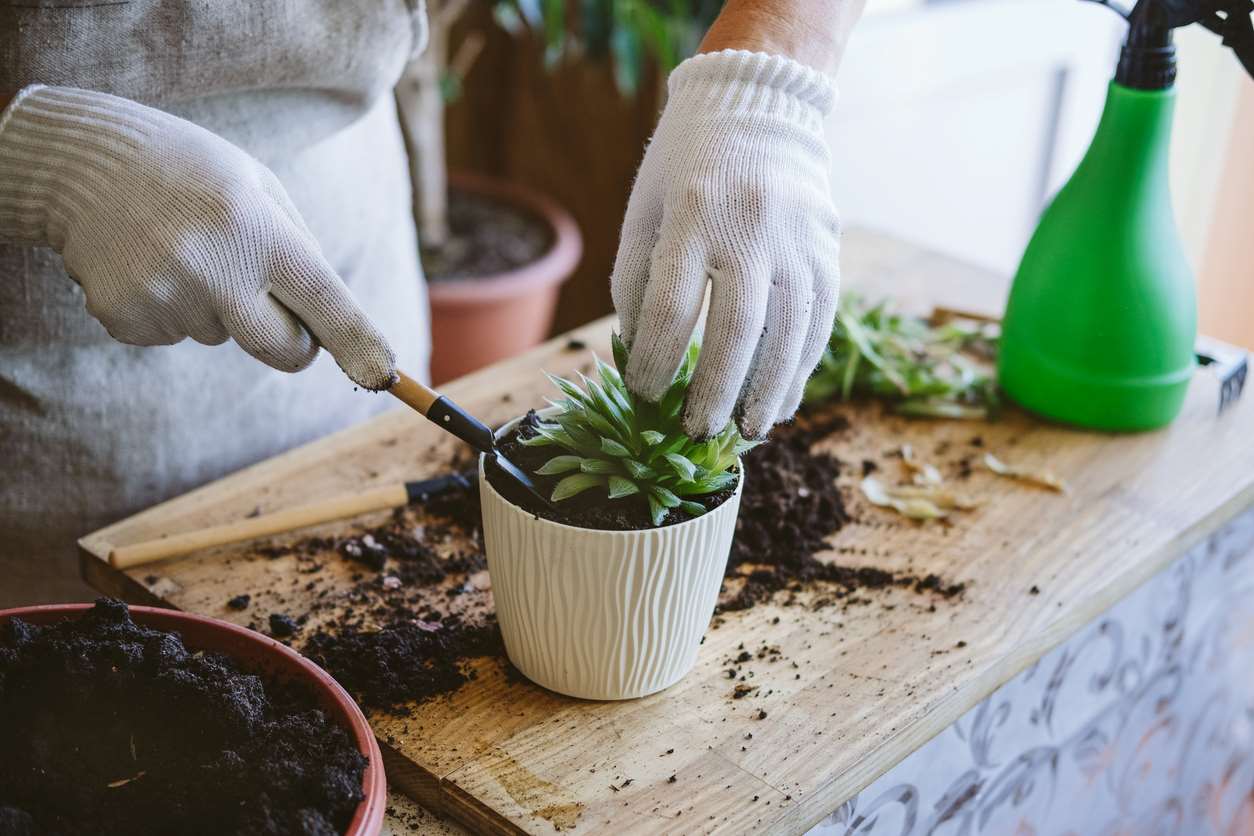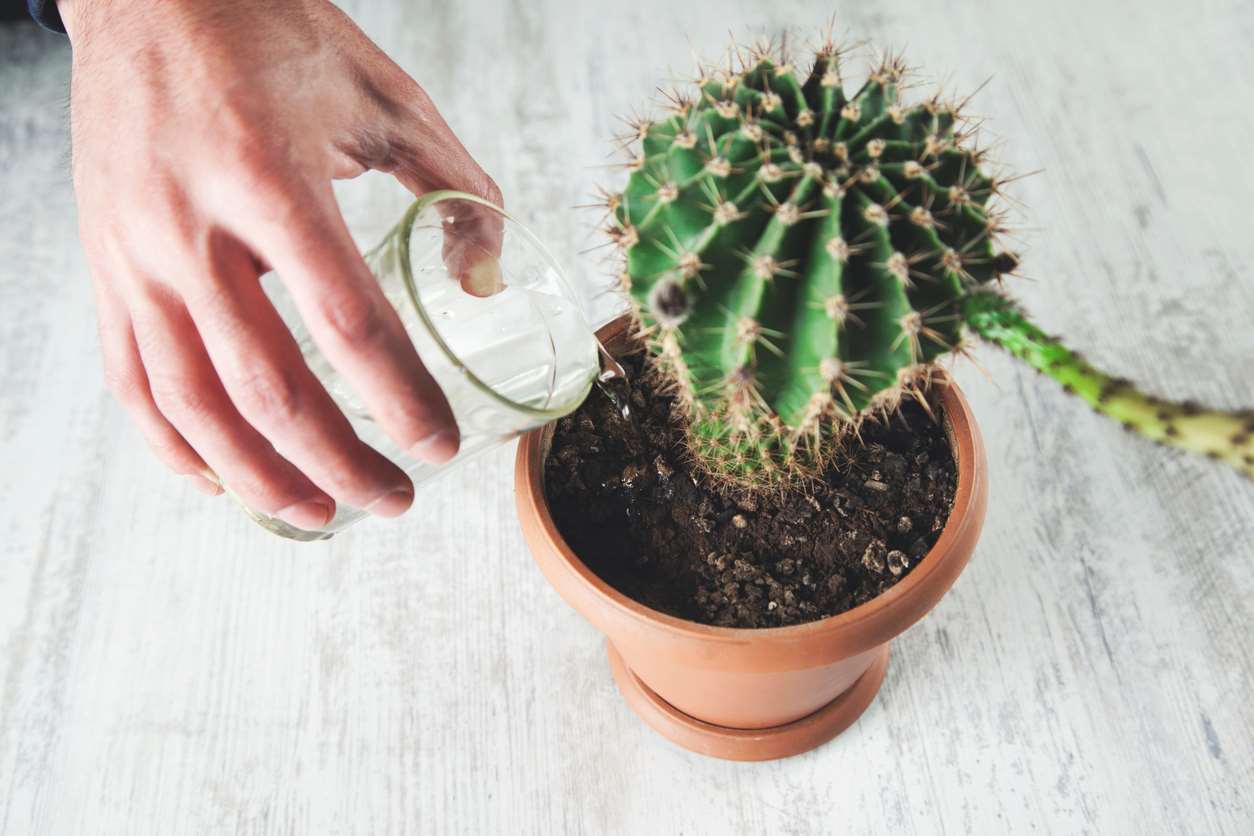
The ideal substrate for repotting your cacti
The right substrate is a “special cacti” mixture, but if you only have one or two plants to repot, there is no point buying a bag of potting soil: do it yourself. Mix equal parts of good garden soil, leaf mold and small gravel or coarse-grained river sand.
The right pot for repotting
If you want to keep your plant for a long time, ban plastic in favor of porous terracotta. It is enough that his diameter is 1 or 2 cm greater to that of the previous one. Cacti are frugal plants, they don’t need a large pot.
Unloading the cactus


Unpot, by gently inverting the pot and pushing the root ball using a stick inserted into the drainage hole. Refresh the root ball, that is to say, remove as much soil as possible from the hair. Help yourself with a fork, and don’t forget to put on leather gloves!
Installing the cactus
Line the bottom of the pot with small gravel or pottery shardsthen fill the void with earthy mixture up to about 1 cm from the edge: you can thus cover the earth with a little mulch.
Mulching
Mulch with gravelof the pozzolan or some expanded clay balls.
They will protect the crown of the cactus from excess humidity, and will prevent, during watering, the earth stuck between the spines from dirtying the base of the plant. They will also add a decorative touch.
Resumption of watering the cactus


Before watering, wait a week that the broken or cut roots (if you have decided to plan the root ball) have had time to heal. Work gradually until you find a regular rhythm, once a week.
In summer or in the event of a heatwave, you can water up to twice a week.
The rest period
After repotting, allow your cactus to acclimatize to its new environment before resuming its usual growth cycle. During this rest period, which generally lasts between 2 to 4 weeksminimize direct exposure to the sun to avoid heat stress and promote good root healing.
This step allows the plant to gradually get used to its new substrate and pot, thus reducing the risk of post-transplant shock.
Monitoring after repotting
Monitor your cactus carefully the first 3, 4 weeks following repotting to detect any signs of stress or disease. Symptoms such as yellowing leaves, appearance of spots or slowed growth may indicate an adaptation problem or infection.
If in doubt, reduce watering and make sure the pot provides good drainage to avoid excess moisture, often responsible for root rot. This vigilance will help your cactus recover from repotting and continue its development in the best conditions.

